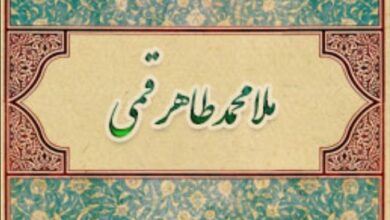Increasingly, policy-makers, leaders and research scholars around the globe are recognizing the need to attend to the potential threat that faith-based radicalization and extremism pose to individuals, communities and societies, even if in some instances the threat is not clearly identifiable.
Pakistan, the world’s sixth most populous country with more than 230 million inhabitants, has a diverse population in terms of faith, sect, ethnicity and other forms of identity. In recent years, systematic faith-based violence there has reached unprecedented levels in terms of death and destruction for Sunni Barelvis, Sufis, Shias, Ahmadis, Christians, Hindus and other communities. Addressing this issue is of global importance.

In almost all incidents of faith-based violence and suicide bombings, militant groups such as the Pakistani Taliban (known as Tehrik-i-Taliban Pakistan [TTP]), Lashkar-e-Jhangvi (LeJ, Army of Jhangvi), Sipah-e- Sahaba Pakistan (SSP, also operating as Ahle Sunnat Wal Jamaat or ASWJ) and affiliated militant outfits, with overlapping, shared memberships and blurred boundaries, are involved. Almost without exception, these militants belong to the Deobandi subsect of Sunni Islam and are involved in attacks on fellow Sunni Muslims, in addition to attacks on non-Sunni and non-Muslim communities. There is also evidence of attacks on relatively moderate Deobandi scholars and other incidents of intra-Deobandi violence.
On a global level there is some evidence of Deobandi militancy in other regions, including in the West and the Middle East in support of Al-Qaeda, and the so-called Islamic State in Iraq and Syria (ISIS, also known as ISIL [Islamic State of Iraq and the Levant] or Daesh).
The specific identification of the radical Deobandi and Salafi militants is useful to isolate them from the majority of peaceful Sunni and Shia Muslims. This provides direction to governmental resources so that they can focus on those outfits, mosques, madrassas, charities, media and social media channels that are associated with these ideologies.
ORGANIZATION AND OVERVIEW OF CHAPTERS
Comprising 18 chapters, the book has been organized in a logical and easy-to-follow manner, beginning with the South Asian context and then expanding to the evolution of an international Deobandi movement. The volume highlights how such a development has implications for faith-based militancy within both a Pakistani and an international context. It also deals with the representation of Deobandism in the media, its links to the Salafi / Wahhabi school of Saudi Arabia, its implications for women, and the current debates regarding countermeasures both within and outside Pakistan.
In “The Genesis, Evolution and Impact of ‘Deobandi’ Islam on the Punjab: An Overview” (Chapter 3), Tahir Kamran delineates the process that culminated in the proliferation of the Deobandi version of Islam in Punjab that eventually led to the formation of terrorist organizations in the closing years of the twentieth century. He argues that the gradual spread of Deobandi influence was not in consonance with the composite cultural ethos that was intrinsic to Punjab. Kamran notes that the Deobandis are still in a minority but that the aggressive articulation of their religious beliefs has given them such leeway that it is possible to think that the creation of Pakistan was in fact to their advantage.
In “Covering Faith-Based Violence: Structure and Semantics of News Reporting in Pakistan” (Chapter 4 ), Abbas Zaidi argues that although hard news reporting is considered to be the most objective of all journalistic genres, it may often be biased. Using the appraisal model within the systemic-functional linguistics paradigm, Zaidi shows that the reporting in Pakistan can be as biased as any other journalistic genre. His chapter focuses on a case study where the Shias of Pakistan were victims of a Deobandi terror campaign. However, through its reporting, the media portrayed the Shias as the aggressors and the Deobandis as the victims.
In “Historical Roots of the Deobandi Version of Jihadism and Its Implications for Violence in Today’s Pakistan” (Chapter 5 ), Arshi Saleem Hashmi argues that the Deobandi movement seems to have multiple objectives. The Deobandi ulema (clerics) moved closer to politics and created the JUH in 1919. However, even before that, in 1914, Maulana Mahmudul Hassan, chancellor at Darul Uloom Deoband, conceived a movement for the liberation of India by which armed units would be deputed to organize the Pakhtuns of the tribal areas and rally support in Afghanistan to provide a convenient point for the Turkish army to open up a new front against the British.
The movement was rooted in the politics of pan-Islamism, but its founders highlighted the differences in their militaristic outlook and criticized the politics of the non-violent movement, which dominated the nationalist Indian arena at that time. Hashmi notes that one of the important and dominant pillars of the Deobandi school of thought is a sacred right and obligation to go to any lengths to wage jihad so as to protect Muslims anywhere in the world. She argues that after the creation of Pakistan, religiously motivated violent Deobandi groups openly declared and claimed militancy, and they established a reign of terror in the country against various sects within Islam and people of other faiths.
In “Experiences of Female Victims of Faith-Based Violence in Pakistan” (Chapter 6 ), Faiza Ali uses an intersectional lens to document and highlight the Sunni Sufi , Shia and Ahmadi women’s experiences of faith-based violence in Pakistan. She takes into account the intersectionality of faith with gender and ethnicity, particularly in the context of the Hazara Shia community of Quetta and the target killings of the Sunni Sufi , Shia and Ahmadi communities in other parts of Pakistan.
Drawing on in-depth interviews with affected women, Ali considers the sociological and psychological aspects of faith-based violence and its intersectional implications.
In “The Shias of Pakistan: Mapping an Altruistic Genocide” (Chapter 10 ), Abbas Zaidi critically examines the Shia genocide taking place in Pakistan. Claiming that the existing definitions of genocide are monolithic grand narratives, he refines the definition by contextualizing it with reference to the Shia genocide. One of the salient features of his proposal is that it explores genocide as being altruistic. Zaidi also investigates how power alignments play their part in defining genocide.
In “Genealogical Sociology of Sectarianism: A Case Study of Sipah-e-Sahaba Pakistan” (Chapter 12 ), Tahir Kamran discusses the example of SSP to argue that the causes other than ideological divide are important in tracing the genealogical sociology of the militant organization. Different groups and stakeholders involved in the conflict deploy multiple strategies to further their interests. SSP represented more than just a violent struggle against the Shia sect.
Historically it was also a legacy of Ahrar; socially it was a confrontation of urban nouveau riche in collaboration with the migrant community, who were politically dispossessed by the Shia landlords; and, in a much wider context, it served as a means to counter the Iranianization of Pakistan—the agenda set forth by General Zia ul Haq and the military establishment with the aid of Saudi Arabia. Hence at various levels the same organization acted with multiple guises, purposes and functionalities by serving the interests of various groups and states.
In “Violence and the Deobandi Movement” (Chapter 17 ), Liyakat Takim examines the genesis and development of the movement, the key figures who shaped its ideology, and its religious basis and affiliation.
He then discusses Deobandi militancy and violence in a transnational context, and documents and highlights the role of Deobandi ideology in the global spread of intolerance and extremism as an affiliate of or ally to the Salafi – Wahhabi ideology.
Takim also explains why certain ideological differences exist and the role of the Deobandis in promoting violence and extremism. He also presents some examples of Deobandi violence, such as the group’s participation in the 7/7 bombings in London and similar incidents of terror in the West, its contribution to Al-Qaeda terrorism and, more recently, its role as transnational warriors of ISIS in Iraq and Syria. The chapter also discusses the Deobandi movement’s collusion with the SSP (the army of the companions of the Prophet) in its sectarian warfare against the Shi’is in Pakistan.
In “Pakistan’s Counterterrorism Strategy: A Critical Overview” (Chapter 18), Naeem Ahmed critically evaluates the counterterrorism strategy of Pakistan, which it adopted after the 9/11 attacks in order to combat terrorism, unleashed by Al-Qaeda and the homegrown terrorist network of militant jihadi and sectarian groups, following the Deobandi takfiri ideology.
The book is intended for an understanding and open audience including, but not limited to, government policy-makers, nongovernmental organization (NGO) workers, terrorism analysts and consultants, peace and conflict studies scholars, and human rights activists. It will be of equal interest to academics and students in the fields of religious and ethnic studies, international relations, geopolitics, anthropology, sociology, political science, governance, diaspora studies, community studies, Islam, South Asia, media studies, peace and conflict studies, and diversity management. In other words, it has an interdisciplinary content and audience.



